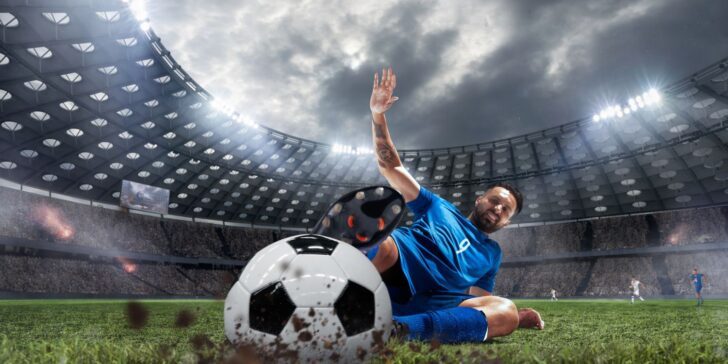As the world’s most popular sport, soccer has a rich and fascinating history that dates back centuries.
From ancient Chinese military exercises to chaotic mob football in England, the roots of soccer are as diverse as they are intriguing.
As you dive into this article, you’ll discover 40 sensational facts that shed light on the evolution, rules, and quirks of the beautiful game.
So, lace up your imaginary cleats and get ready to explore the world of soccer like never before.
One of the earliest forms of soccer is called Tsu Chu, an ancient Chinese military exercise that dates back to 200 to 300 BC.
Another (and more similar) form of ancient soccer is mob football in England. It was a chaotic way of playing the sport since it had few rules and was often played with too many players. This explains why it was eventually banned in the country during the Middle Ages.
Speaking of England, modern soccer was invented there in 1863.
The shoes or cleats of soccer players have spikes underneath to prevent them from slipping when running on grass.
There’s a total of 90 minutes in a soccer game, which is split into two halves. However, an extension can be given after each half to compensate for the time spent handling injured players, checking referees’ calls, and other things that delay the game.
Different terms are used when a soccer player scores multiple goals in a match. However, the most common ones are brace (two goals) and hat trick (three goals).
The maximum number of soccer players allowed on the field from one team is 11, while the minimum is seven – having less than seven will result in a forfeit.
The positions in soccer are forward, midfielder, defender, and goalkeeper. But it’s worth noting that these soccer positions have sub-types. In the case of forward players, some examples are center forward, second striker, and winger.
Indoor football is played on artificial grass, while futsal is played on a hard court. Besides this, the two types of soccer also differ in time, number of players, and even the ball used!
When a soccer player or goalie commits a foul inside the penalty area, the opponent is awarded a penalty kick, which is taken from a spot 12 yards (10.97 m) away, right in front of the goal. The only line of defense against the penalty kick is the goalkeeper.
Free kicks, given after an opponent commits a foul or violation, typically happen outside the penalty area. However, there are some rare instances that a free kick is made inside it. It’s called an indirect free kick, which is a type of free kick that requires the ball to be touched by another player before scoring a goal.
A soccer team can have five substitutions per game but only three substitution opportunities, which means multiple substitutions simultaneously are needed to use all five substitutions.
While many sports are played indoors, soccer is primarily played on an open field. This means that some soccer matches are still played even when it rains or snows – games are rarely canceled due to weather conditions.
There’s a soccer competition called RoboCup Soccer, wherein the players are robots instead of humans.
The goalkeeper (or goalie) can use their hands in a soccer match, but only when they’re within the penalty box.
A “handball” is a foul that happens when a soccer player uses their hands or arms during the game.
A yellow card is given to a soccer player as a warning for things like committing a reckless foul or doing excessive celebrations.
When a player is given their second yellow card in a match, it gets upgraded to a red card. The player must then leave the game.
A red card can be given immediately, though. Some possible reasons for this would be a soccer player injuring an opponent intentionally or using offensive language.
Referees can also give a soccer player a red card if they try to deflect a goal using their hands. Then, in some cases, the opponent is rewarded with a penalty kick afterward.
Penalty kicks are often taken with the intention of scoring a goal, but it’s not the only option. You can also pass the ball to another player when taking a penalty kick.
The reason why soccer players wear long socks boils down to keeping their shin guards in place. Shin guards are particularly important to prevent injuries from tackling.
Soccer is more commonly referred to as football, but it’s not the same as American football, which is more similar to rugby.
Soccer matches can end in a draw. But in the case of a knockout game, an additional 30 minutes that are split into halves is given. If the game still ends in a tie, a penalty shootout is then made to determine the winner.
One of the most challenging yet remarkable ways to score a goal is through a bicycle kick. It’s an acrobatic move requiring a soccer player to jump as if attempting a backflip and kick the ball in mid-air.
FIFA, a soccer organization founded in 1904, has more members than the United Nations (UN).
The World Cup is one of the most highly anticipated sports events in the world. This international soccer match only occurs once every four years.
Soccer players who aren’t goalkeepers can only use their hands during throw-ins, which occurs when the ball goes out of bounds.
Here’s the catch with throw-ins, though. Soccer players must throw the ball overhead with two hands and both feet on the ground. Scoring a goal also isn’t allowed during throw-ins!
The purpose of a corner flag in a soccer field is to know whether the ball crossed the sideline or the goal line, which helps referees decide if it’s a throw-in or a corner kick.
A video assistant referee (VAR) is a camera that provides an instant replay, and it’s used in soccer matches to ensure referees make the right calls during the game.
A goal scored directly from a corner kick is called an Olympic goal “Olimpico.”
Soccer games start with a coin toss. The winner then gets the privilege of deciding if they get the ball first or choosing which side of the soccer field they’ll attack for the first half. The coin toss winner can only select one of the two options.
When a soccer team gets three major trophies in a single season, it’s called a treble.
During the 2009 match between Liverpool and Sunderland, a beach ball thrown onto the pitch deflected a shot, leading to a goal for Sunderland. The goal stood despite controversy as the ball was considered in play due to a quirk in the rules.
Speaking of controversial goals, Argentinian soccer legend Diego Maradona scored a goal against England during the quarter-finals of the 1986 World Cup using his hands. The goal, which became known as the “Hand of God,” was only allowed as the referee thought it came off Maradona’s head.
The offside rule was made to prevent soccer players from goal-hanging or waiting near the goalpost to score unfairly.
Although rare, goalkeepers are allowed to score goals. The most common yet hardest way is through a goal kick, made by the team’s goalkeeper from within their penalty area.
A knuckleball is a way of kicking the ball, so it has less spin, resulting in a shot with a zigzag path instead of a straight one. This is harder to block by the goalkeeper due to the unpredictable trajectory of the ball.
Soccer players often use the inside foot when passing or shooting the ball. However, the outside foot and even the sole can be used to handle the ball!

In the world of soccer, it’s not all serious business – it’s a spectacle filled with jaw-dropping moments and dazzling showmanship.
From the gravity-defying bicycle kick to the unpredictable zigzag path of the knuckleball, we’ve peeled back the curtain on the magic tricks players pull off on the pitch.
So, the next time you watch a soccer match, remember that it’s not just a game but a stage for players to awe the world with their artistry and flair.


















